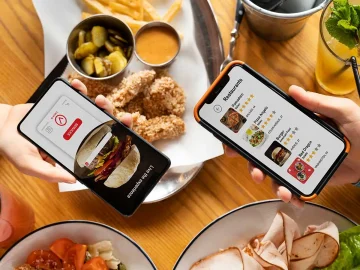Struggling to fill tables at your restaurant despite having a great menu or wondering how successful eateries keep their buzz alive?
Creating an effective restaurant marketing plan can be the game-changer you need. Here, the key is to basically understand your target audience, create compelling content, and use digital platforms to your advantage.
That’s why, in the following guide, we will walk you through the steps to create a marketing plan that maximizes your reach – helping you attract more customers and boost your brand’s presence.
Keep reading to find out!
What is a Restaurant Marketing Plan?
A restaurant marketing plan is a strategic document that outlines how a restaurant will attract and retain customers. That is, it details the marketing goals, target audience, promotional strategies, and channels to be used, ensuring that the restaurant can effectively reach potential diners and keep them coming back.

For example, let’s say, you own a new Italian restaurant called “XYZ.” As a result, your marketing strategy for new restaurant might include:
- Target Audience: Local families and couples looking for a cozy dining experience.
- Marketing Channels: Social media platforms like Instagram and Facebook, local food blogs, and email newsletters.
- Promotional Strategies: Launch a grand opening event with a 20% discount, run a weekly “Pasta Night” special, and offer a loyalty program with a free meal after ten visits for repeat customers.
- Content Creation: Post mouth-watering photos of your dishes on social media, share stories about your chef’s Italian heritage, and create short videos that show the making of your signature pasta dishes.
- Budget and Timeline: Allocate $1,000 for initial restaurant promotions over three months, with specific campaigns launching every two weeks.
Why a Marketing Plan is Important for Restaurants?
Running a restaurant without a marketing plan is like cooking without a recipe. Sure, you might get lucky and whip up something decent, but more often than not, you will end up with a mess on your hands.
Here’s why a solid marketing plan is crucial for your restaurant’s success:
Attracting New Customers
First and foremost, a marketing plan helps get the word out about your restaurant.
Suppose, you have just opened a cozy little bistro with the best lasagna in town. But if no one knows you exist, that lasagna will go uneaten.
However, with a solid restaurant marketing plan, things will be a bit different. As it will outline all kinds of strategies to reach potential customers through social media, local advertising, and events, ensuring that your delicious food gets the attention it truly deserves.
Building a Brand
Your restaurant isn’t just a place to eat; it’s a wholesome experience.
And a well-crafted marketing plan helps you define and build your brand.

Whether you are aiming for a family-friendly vibe or an upscale dining experience, consistent branding across all your marketing channels helps set expectations and creates a memorable identity – making customers come back.
Increasing Revenue
A marketing plan also includes strategies for upselling (hello, dessert menu!), promoting special events, and creating loyalty programs that encourage repeat business.
In other words, by planning your promotions and marketing efforts, you can boost your sales and keep your cash register ringing.
Staying Ahead of the Competition
Without any doubt, the restaurant industry is fiercely competitive. And a marketing plan helps you stay ahead of the curve by keeping you aware of industry trends and what your competitors are doing.
As a result, with this information, you can innovate, differentiate your offerings, and position your restaurant as the go-to spot in your area.
Measuring Success
How do you know if your marketing efforts are paying off?
A marketing plan includes metrics and goals to track your progress.
And by regularly reviewing these metrics, you can see what’s working and what’s not, allowing you to adjust your strategies accordingly. As at the end of the day, it’s all about making informed decisions based on real data.
Efficient Use of Resources
Lastly, a marketing plan helps you allocate your resources efficiently. Instead of haphazardly spending money on random ads or promotions, you have a clear strategy that outlines where to invest your time and budget for the best return on investment.
This ensures that every dollar spent on marketing contributes to your restaurant’s growth.
Key Components of a Restaurant Marketing Plan
Want to create a recipe for success in the restaurant world? Here’s what you need to include:
Target Audience Identification
Who are your customers? What do they like? When do they dine out?
Are you targeting families, young professionals, foodies, or maybe all of the above?
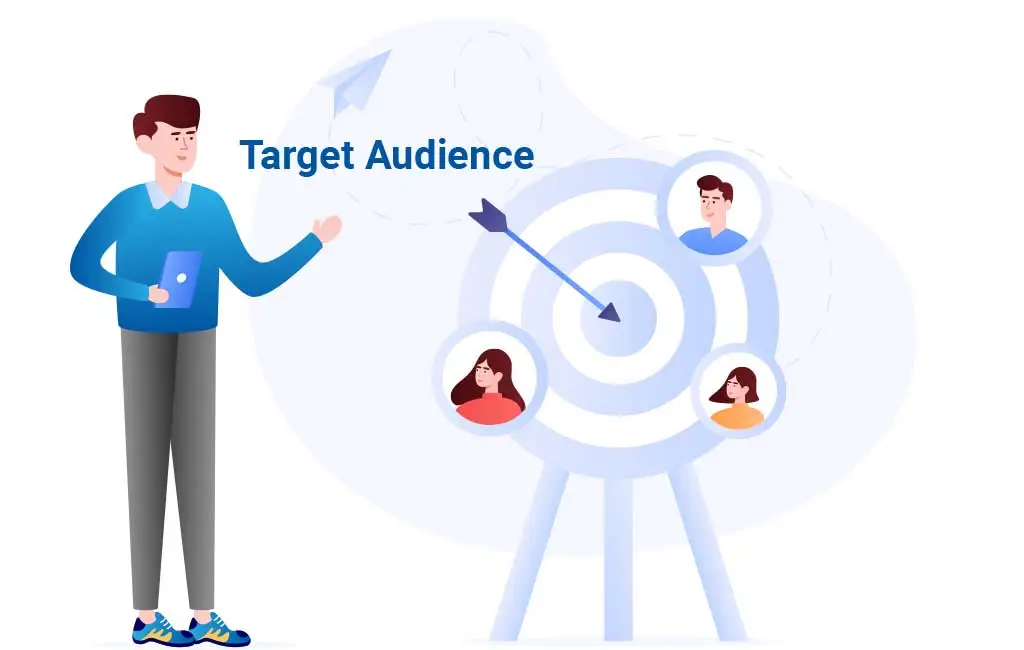
This knowledge allows you to tailor your menu, promotions, and overall dining experience to meet their needs. After all, when you know your customers, you can serve them better.
Unique Selling Proposition (USP)
What sets your restaurant apart from the competition?
Be it your signature dishes, unique ambiance, or exceptional service, your USP should clearly communicate what makes your restaurant special. This helps customers choose you over other dining options.
Competitive Analysis
Always take a look at what other restaurants in your area are doing.
What are their strengths and weaknesses? Understanding your competitors’ strategies can inspire new restaurant marketing ideas and help you find opportunities to differentiate yourself in the market.
Online Presence and Digital Marketing
Having a strong online presence is more than important, especially in this digital world.
This includes having a user-friendly website, active social media profiles, and possibly even a presence on food delivery apps.
Furthermore, digital marketing strategies like social media campaigns, email newsletters, and online advertisements can help you reach a broader audience and drive traffic to your restaurant.
Offline Marketing and Local Outreach
While digital marketing is essential, we simply cannot forget about offline strategies.
It could include local restaurant marketing in newspapers or magazines, partnering with nearby businesses for cross-promotions, sponsoring community events, or even hosting your own events like cooking classes or wine tastings.
Menu Development and Pricing
Your menu is your main attraction. A well-designed menu not only refelects your culinary offerings but also influences customer perception and purchasing decisions.
Hence, pricing strategies should be competitive yet profitable, taking into account food costs, market trends, and customer expectations.
Promotions and Loyalty Programs
Everyone loves a good deal!
So, always plan regular promotions such as happy hour specials, seasonal menus, or discounts for loyal customers. Besides, implementing a loyalty program rewards repeat diners and encourages them to choose your restaurant over others.
Customer Experience and Feedback
The dining experience extends beyond the food. Excellent customer service, ambiance, and cleanliness all play a role in customer satisfaction.
Also, collecting feedback through comment cards, online reviews, or surveys helps you understand what your customers love and where there’s room for improvement.
Budget and ROI Measurement
As always, every kind of marketing plan needs a solid budget.
Therefore, allocate funds for each marketing initiative and track your return on investment (ROI). So, by measuring the success of your campaigns, you can easily optimize your marketing efforts over time and ensure you are getting the most out of it.
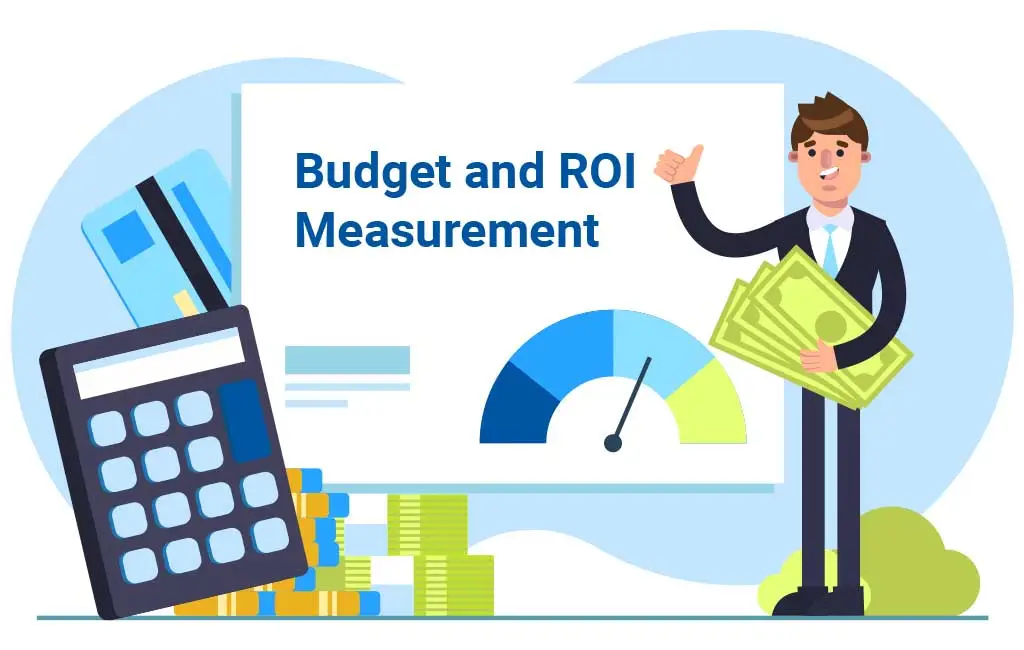
How to Create a Restaurant Marketing Plan?
Creating a best restaurant marketing plan can really set you up for success in a competitive industry like dining. Below is a list of the steps that will have customers lining up at your door:
Step 1: Conduct a Market Research
First things first, you have got to know your battlefield.
Market research helps you understand your competition, your target customers’ preferences, and even trends that could influence your menu or marketing strategies. Much like scouting out the terrain before launching your culinary adventure.
Step 2: Set Restaurant Marketing Budget
Money talk!
Setting a budget might not sound thrilling, but it’s crucial. You can think of it as your roadmap for how much you can spend on everything from online ads to those Instagram-worthy photos of your dishes. It keeps you right on track and ensures your efforts are financially sustainable.
Step 3: Create a Restaurant Identity and Menu
This is where your creativity shines. Your restaurant’s identity isn’t just about a cool logo (though that helps). It’s about defining what makes you unique—your ambiance, your cuisine style, and the overall experience.
Hence, your menu should reflect this identity and make mouths water at just the thought of your dishes.
Step 4: Build a Restaurant Website
In today’s digital age, your website is your storefront. It’s where hungry customers will go to check out your menu, make reservations, or even order online.
So, make sure it’s user-friendly, visually appealing, and optimized for mobile devices. Much like your online welcome mat!
Step 5: Establish Online Presence
Social media isn’t just for selfies and memes—it’s a powerful tool for reaching diners.
Platforms like Instagram, Facebook, and TikTok allow you to show your dishes, engage with customers in real-time, and even run targeted ads to attract hungry foodies to your door.
Step 6: Start Restaurant Email and SMS Marketing
Direct communication is super powerful. Hence, collecting customer emails and phone numbers (with permission, of course) to send targeted promotions, exclusive deals, updates, or even a sneak peek at your latest menu additions can keep them coming back for more – turning occasional diners into regulars.
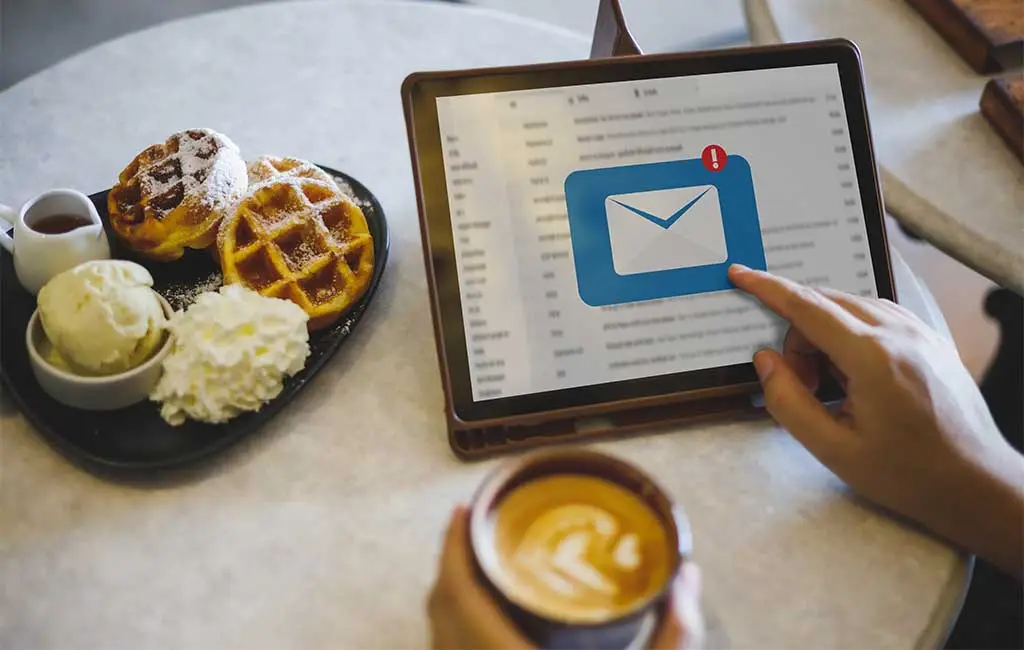
Step 7: Leverage Online Review Sites
Love them or hate them, online reviews can make or break a restaurant.
So, encourage satisfied customers to leave positive reviews on sites like Yelp or Google.
And respond graciously and promptly to any positive and negative feedback— it shows that you care about your customers’ experiences and are committed to delivering exceptional service.
Step 8: Make Your Restaurant Marketing Plan Count
Not all customers have the same interests or preferences. Segment your email list based on criteria like dining habits, past behavior, and demographics. This allows you to send more relevant messages to each group. For example, you could have separate email campaigns for brunch enthusiasts, loyal dinner patrons, or those who prefer takeout.
Necessary Tools and Resources
Each restaurant marketing tools plays a unique role in helping you reach and engage with your customers, streamline your operations, and ultimately grow your business.
Such as the following:
Customer Relationship Management (CRM) Software
Keeping track of your customers’ preferences and dining habits can help tailor your marketing efforts. CRM systems like Salesforce or HubSpot store valuable customer data, allowing you to offer personalized promotions and enhance the overall dining experience.
Social Media Management Tools
Social media management tools like Hootsuite, Buffer, or Sprout Social help you schedule posts, track engagement, and analyze performance across various platforms. This way, you can focus more on creating mouthwatering content while the tool handles the logistics.
Email Marketing Platforms
Email marketing platforms like Mailchimp or Constant Contact help you design, send, and track email campaigns, ensuring your messages reach the right people at the right time.
Besides, with features like segmentation and automation, you can send personalized offers that make your customers feel special.
Website Builders and Hosting Services
Your website is your virtual dining room, so it needs to be inviting and functional. Website builders like Wix, Squarespace, or WordPress offer easy-to-use templates and hosting services that make creating a stunning website a breeze.

Hence, always make sure your site is mobile-responsive and optimized for search engines to attract more visitors.
Graphic Design Tools
Graphic design tools like Canva or Adobe Spark allow you to create professional-looking graphics for your social media posts, menus, and promotional materials.
No need to be a design expert—these tools make it easy to whip up appealing visuals in no time.
Online Review Management Tools
Keeping track of online reviews can be overwhelming, but tools like ReviewTrackers or Google Alerts can help. These tools aggregate reviews from multiple platforms, making it easier to monitor feedback and respond promptly.
Plus, staying on top of reviews shows customers that you care about their experiences and are committed to improvement.
Point of Sale (POS) Systems
A reliable POS system is the backbone of your restaurant’s operations. Modern POS systems like Toast or Square not only handle transactions but also provide valuable insights into sales trends, inventory management, and customer behavior. This data can inform your marketing strategies and help you make data-driven decisions.
Analytics and Reporting Tools
Understanding what’s working and what’s not is crucial for refining your marketing efforts. Analytics tools like Google Analytics or restaurant-specific software provide detailed reports on website traffic, social media engagement, and campaign performance.
So, make sure to properly utilize this data to tweak your strategies and maximize your marketing ROI.
Advantages of a Restaurant Marketing Plan
A restaurant marketing plan comes with numerous advantages that can significantly contribute to the success and growth of your business. Here are some of the key benefits:
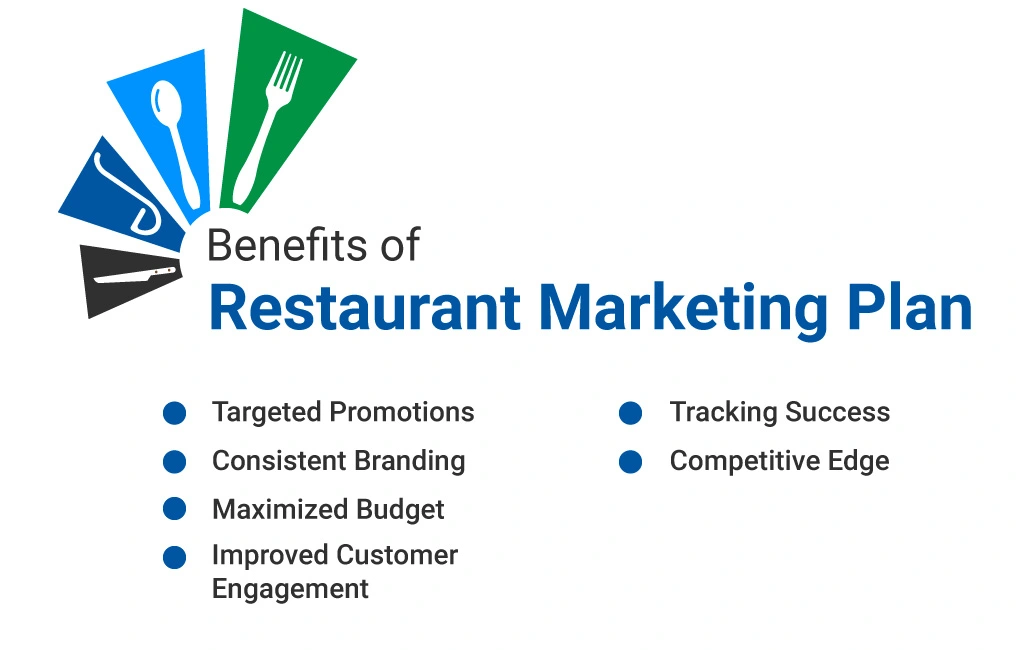
- Targeted Promotions: With a marketing plan, you can tailor your promotions to hit the right crowd at the right time. Whether it’s a special brunch for the weekend warriors or a cozy dinner deal for the date night crowd, targeted promotions always bring people in.
- Consistent Branding: A marketing plan helps you maintain a cohesive brand image across all channels. From your social media posts to your menu design, everything should scream “this is us!”
- Maximized Budget: Let’s be real – marketing can be expensive. But with a smart plan, you can allocate your budget wisely. Instead of throwing money at every possible advertising option, you will know which platforms give you the best output.
- Improved Customer Engagement: A marketing plan includes strategies for connecting with them through social media, email newsletters, and loyalty programs. This keeps them coming back and turns them into your biggest fans.
- Tracking Success: What’s the point of a plan if you don’t know whether it’s working? A good marketing plan includes metrics and KPIs to track your success. This way, you can see what’s working, tweak what’s not, and keep improving.
- Competitive Edge: A solid marketing plan helps you stay ahead of the competition. You will know your strengths, play to them, and stand out in a crowded market. Who doesn’t want to be the go-to spot in town?
Disadvantages of a Restaurant Marketing Plan
Creating a marketing plan for your restaurant seems like a must, but it comes with its own set of challenges. Such as the following:
- Costly Investment: Marketing plans can be quite expensive. From hiring professionals to running ad campaigns, the costs can add up, especially for small or new restaurants.
- Time-Consuming: Creating and executing a marketing plan takes significant time and effort. For busy restaurant owners, this can divert attention from other critical areas like menu development and customer service.
Uncertain ROI: There’s no guarantee that your marketing efforts will pay off. The competitive nature of the restaurant industry means that the return on investment can be unpredictable.
Risk of - Misalignment: If your marketing messages don’t align with your brand, they can confuse or turn away potential customers, harming your reputation.
Over-Reliance on - Marketing: Focusing too much on marketing might lead to neglecting essential aspects like food quality and customer service. A balanced approach is crucial.
Adaptation - Challenges: Keeping up with the constantly evolving marketing landscape can be overwhelming, especially for those less tech-savvy.
Tips to Create a Successful Marketing Plan for Your Restaurant
- Use platforms like Instagram, Facebook, and Twitter to show your dishes, share customer reviews, and post updates. High-quality photos and engaging content can draw in a huge crowd.
- Develop a unique brand identity, including a memorable logo, consistent color scheme, and a distinct voice. This helps your restaurant stand out in a competitive market.
- Make sure your website is user-friendly, mobile-optimized, and includes essential information like the menu, location, and contact details.
- Collaborate with local food bloggers and influencers to reach a broader audience. They can provide authentic reviews and social proof, boosting your restaurant’s credibility.
- Build an email list to keep customers informed about new menu items, upcoming events, and exclusive deals to strengthen customer relationships and drive traffic.
- Ask satisfied customers to leave reviews on platforms like Yelp, Google, and TripAdvisor.
- Positive reviews enhance your restaurant’s reputation and attract new patrons.
- Regularly analyze your marketing efforts to see what works best. Use tools like Google Analytics and social media insights to track performance and adjust your strategy as needed.

Conclusion
Creating a restaurant marketing plan that truly works requires a blend of creativity, strategic thinking, and consistent effort. And by only understanding your audience, using digital platforms, and continually refining your approach based on feedback and results, you can indeed elevate your restaurant to new heights.
However, a successful marketing restaurant is an ongoing journey, not a one-time task. So, make sure to implement these above-mentioned steps and stay adaptable.
Ready to see your restaurant packed with happy diners? Start creating your winning marketing plan today!

